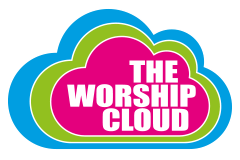
Get this product
I was really excited to see an article on the BBC website the other day. It was about a church service at St John’s in Mickleover, Derbyshire, that used tablet computers instead of hymn and prayer books. The words were sent via the church’s wi-fi signal to tablets that each of the parishioners had been given to use. You can view the video report here and a text version here.
The Holy Ghost in the Machine
It is really encouraging to see this use of technology in Church. As the Vicar says on the report, the Church should be using any modern technology that can help with its mission. Over the years many churches have moved from hymn books to acetate with Over Head Projectors and now PowerPoint with video projectors, but this is the first major use of tablet computers.
Modern technology can often be daunting, and anything new and unknown a little scary. However, as the congregation at St John’s found, the technology enhanced their ability to join in. You can’t change the text size on a hymn or prayer book, but on a tablet this is easy.
Beyond Broadcast
Using technology is one thing, but using technology to its full potential is something else. We’re still at the stage where most churches expect complete attention to the person standing at the front, where a murmur from a mobile phone brings stares from around the congregation and if you get a call during the service... well you’d best be most apologetic for not putting your mobile on silent mode.
However, as more people learn how to use their smartphones and tablets, there is a quiet revolution taking place. Modern technology is shaping the way we do Church, and we should embrace these changes.
I’ve been in meetings where more people are following the Bible reading on their phone than a printed version. So the next time you think that group of young people are texting their friends during the service, you may need to think again. Bible applications on mobile devices make it easy to annotate and add notes than a pseudo leather-bound NIV. We’ve already seen that technology isn’t just for the young, and an electronic version of the Bible on your phone is a lot easier to read.
I think real change in our services will come through interaction, or social media. We should all have heard about Facebook and Twitter, and these networks can be used by your churches, not just outside of the service but during.
The Church: a community both on and offline
Social media networks like Twitter enable users to talk to one another over the Internet, quite often on specific topics. What if this topic was today’s sermon? And what if the person delivering the sermon was following these conversations and was able to respond?
A socially connected service would engage those at the meeting, and if it was being streamed online as audio or video, it could engage those not attending the service!
The future will mean that a preacher has to be even more careful with what he says. I can imagine the gasps, and tweets, as a preacher's statement or fact, after a quick search on google or Wikipedia, is found to be invalid.
What technology does is change the nature of authority. Society has moved from a time of broadcast media, where corporations and organisations start, continue and end the conversation. Social media means anyone can start a conversation, anyone can join in and anyone can leave when they want to. It does leave us with some interesting questions:
- Can this be embraced by our churches?
- What impact will it have on leadership?
- How can we include those without a mobile device in the conversation? (St John’s provide one solution to this.)
- Are we confident enough to allow our congregations to ask questions and be part of the conversation?
With regard to that final point, it is my belief that if we aren’t confident and we don’t allow conversation, this generation will look elsewhere.
It is in this connected environment that The Seed exists. The Seed and its resources, are instantly downloadable for use. It takes a matter of moments to download something from The Seed and include it in your service. You don’t need to worry about remembering the right book, or finding the right prayer or images, all this and more is available moments before you start the meeting. Or, if you really become interactive and responsive, during the service itself.
Conclusion
Social media, social networks and software have led to a revolution in the way people interact, make decisions and live. The church should embrace these changes and engage with the environment it finds itself. There is no need to change the message, but we do need to adjust the environment and means to deliver that message.
I think church services should be truly interactive and not something that is done to us. Each and every member can take part and be part, perhaps shaping the direction of songs, prayers and talks. In fact, it could be fun if the church begins voting on what song to sing... but then I do like a little bit of controversy.
